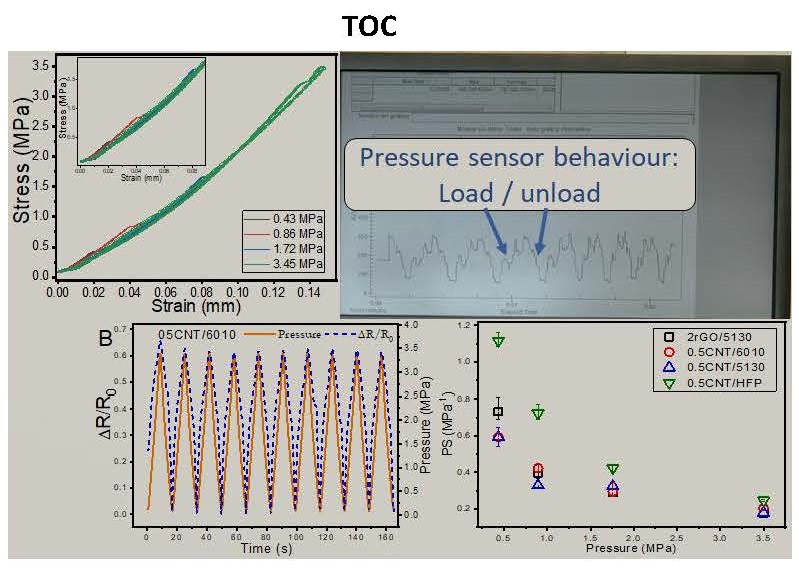Polymer-based composites reinforced with nanocarbonaceous materials can be tailored for functional applications. Poly(vinylidene fluoride) (PVDF) reinforced with carbon nanotubes (CNT) or graphene with different filler contents have been developed as potential piezoresistive materials. The mechanical properties of the nanocomposites depend of the PVDF matrix, filler type and filler content. PVDF 6010 is a relatively more ductile material, whereas PVDF-HFP shows larger maximum strain near 300% strain for composites with CNT, 10 times higher than the pristine polymer. This behaviour is similar for all composites reinforced with CNT. On the other hand, rGO/PVDF composites decrease the maximum strain compared to neat PVDF. It is shown that the use of different PVDF copolymers does not influence the electrical properties of the composites. On the other hand, CNT as filler leads to composites with percolation threshold around 0.5 wt.%, whereas reduced graphene oxide (rGO) nanocomposites shows percolation threshold at ≈2 wt.%. Both nanocomposites present excellent linearity between applied pressure and resistance variation, with pressure sensibility (PS) decreasing with applied pressure, from PS≈ 1.1 to 0.2 MPa-1. A proof of concept demonstration is presented, showing the suitability of the materials for industrial pressure sensing applications.

